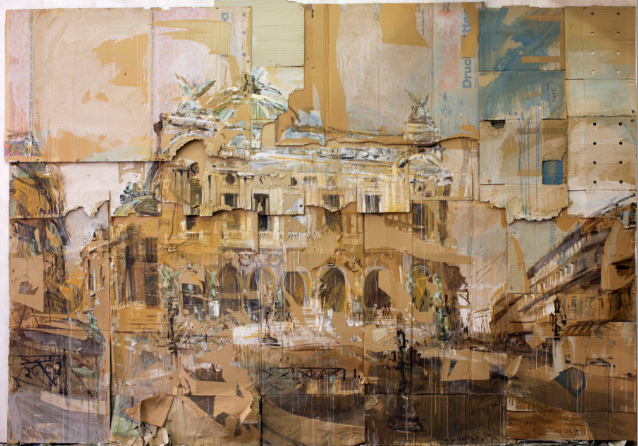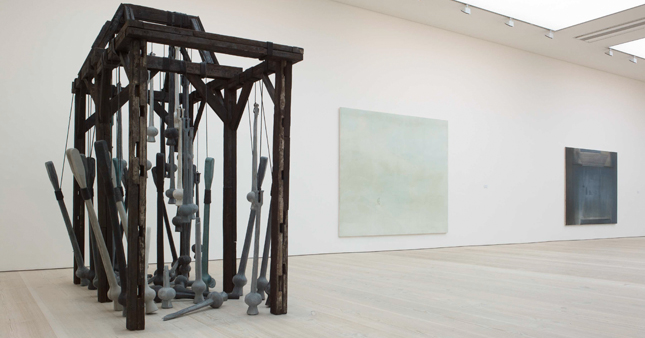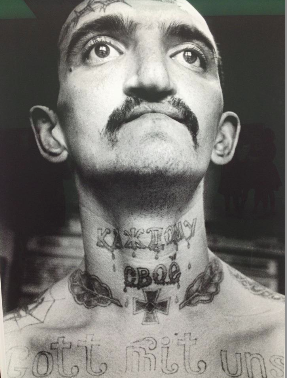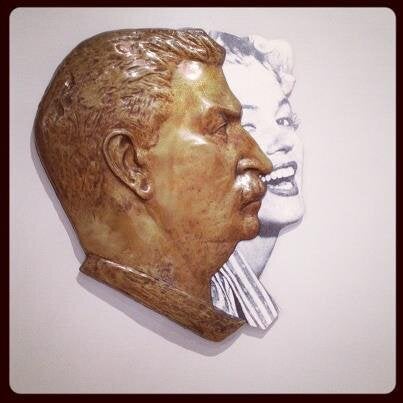When Vogue says 'black' is in fashion, the world obliges to attend, and when Saatchi says Russia is hot, the art world clears its monocles and nods in approval. And so Saatchi did.
Yesterday's official launch of the Saatchi exhibitions 'Gaiety is the most outstanding feature of the Soviet Union' and 'Breaking the Ice : Moscow Art, 1960-80's' launched a number of talented Russian artists into the Global art scene.
GAIETY IS THE MOST OUTSTANDING FEATURE OF THE SOVIET UNION
21 NOV 2012 - 5 MAY 2013

The exhibition featured both prominent artists of the new wave like Valeriy Koshlyakov (his Opera installation above) and Boris Mikhailov, with his disturbing and fragile, post human images of homeless Russian drunkards of the 90's, as well as recently graduated Yelena Popova, Daniel Bragin and Nika Neelova (her work Principles of Surrender below).

Sergei Vasiliev's criminal tattoo photographs were a real caption to the exhibition's title - images of people, whose whole lives and belief systems are displayed on their bodies after years in prisons. The photos are a fascinating study of the mentality of 'the other' in Russia.

Dasha Fursey, a young artist from St Petersburg, whose previous project 'Pioneer Girl' already launched her as a contemporary thinker and presented a romantic aesthetic of the happy Soviet childhood, its perceptions and downfalls, brought a new exhibit titled 'Boundary Post of a Cat Bajun'. Inspired by the Russian fairy tales and looking for their contemporary meaning, Fursey created the boundary post pillar, which stands at the border between two worlds. Fursey quotes historian Berdyayev as inspiration: "Russia is a whole section of the world, a huge East-West link. It connects two worlds. Two basic principles have always been in conflict in the Russian soul: the Eastern and Western values and the search for Truth".
Made of the traditional Russian marinated foods, which are usually consumed with vodka or used as table decorations when welcoming visitors, this post looks at the meaning of colliding worlds and the search of values between them.
Here then is a type of Russian psychedelia seen through the prism of life in the forests, where people want miracles in place of knowledge. The character of Cat Bajun, which perces on top of the Boundary Post, is a prototype of the Cheshire cat in Alice in Wonderland, and a character who gives people the words they want to hear.
Fursey comments on her exhibit: "England is known for it's pickled sharks and it is good to know that Russian women also know how to marinate, such that we won't die of starvation!"

(Image: artist Dasha Fursey, art historian Bella Radenovich and art banker Maria Zherebtsova)
BREAKING THE ICE: MOSCOW ART, 1960-80s
21 Nov 2012 - 24 Feb 2013
Tsukanov Foundation have presented a collection of meaningful works by the Moscow artists (among them) Ilya Kabakov, Vitaly Komar and Alexander Melamid, Viktor Pivovarov, Leonid Sokov (his work below) and their avant-garde perspective on consumerism.

Beyond the two exhibitions, there was the crowd. Two worlds collided: the powerful arty & the Moscow glitz, all stirred by the beautiful Absolute Vodka cocktails.
Do go, these artists are hot, says Saatchi itself.
